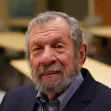The Daily Source of Urban Planning News
America's Crumbling Infrastructure -- And How To Fix It
An interview with president of the American Society of Civil Engineers on how to get our public works back in shape.
Vulgaria: The Re-Enchantment Of Suburbia
Paul Knox explores Vulgaria: the emblematic cultural landscapes of contemporary American suburbia.
Rebuilding Neighborhoods From The Ground Up
Pennsylvania's new BluePrint Communities program gives community groups the resources to manage redevelopment.
Remembering The Watts Riots
Mystery writer Walter Mosley reminds Angelinos that on the 40th anniversary of the Watts Riots, rage still smolders in the city.
BLOG POST
History of Traffic
Seriously supergood article on the history and technology of traffic <a href="http://www.cabinetmagazine.org/issues/17/blocking.php">here</a>, at Cabinet magazine. <img src='http://www.planetizen.com/tech/files//tower.jpg' alt='' width="200" align="right"/>How it works, what the terminology means, and how it's (not) controlled. Don't hate me for quoting so much, but it's a really wonderful piece:<br /> <br /> <blockquote>In 1930, Philadelphia put the "master controller" (both a device and a person) of its flexible-progressive signal system in the basement of its City Hall; and the groundbreaking Automated Traffic Surveillance and Control (ATSAC) center, created for traffic management during the 1984 Olympics, operates four floors below City Hall in Los Angeles.<br /> <br /> Once envied for its vast, efficient freeway system, Los Angeles eventually became the smoggy symbol of destructive automobile dependence and gridlock. Both images, however, are outdated. With one of the earliest and now most extensive traffic management systems, L.A. has become paradigmatic for "intelligent" urban traffic control worldwide. The Los Angeles district of the California Department of Transportation (CALTRANS) operates a traffic management center (TMC) in a fortified building, blocks away from the ATSAC center. ATSAC & CALTRANS combine with the Los Angeles County Public Works TMC to handle traffic flow throughout the region.<br /> <br /> Examining Los Angeles further as a case study in both traffic and traffic management, we find a feedback loop between the environment and the system: the environment can be described as the collective movement of vehicles across the urban grid; the system is the infrastructure designed to measure, monitor, and control the environment. More specifically, the system in Los Angeles has two primary realms: the physical and the virtual.<br /> <br /> In the physical realm, over 50,000 buried loop detectors, the insulated wire loops that passively detect subtle magnetic field changes from vehicles, combine with over 700 weatherproofed video cameras, some of which are remotely controlled to pan and zoom, to monitor and control traffic flow. Loops automatically trigger software in switching boxes linked to intersection signals but also send data to TMCs that allow traffic engineers to monitor flow patterns and adjust timings remotely. A simple click of a mouse button can start or stop the flow of movement on the grid.<br /> <br /> [snips]<br /> <br /> When traffic incidents occur, the system acknowledges and responds in various ways depending on the technological level of the area's infrastructure. In the case of most freeways or major intersections in the city itself, cameras are the first observers, recording the collision or obstruction and the immediate effect on the surrounding flow. An extreme incident is known as a Sig-Alert and is defined by the California Highway Patrol as "any unplanned event that causes the closing of one lane of traffic for 30 minutes or more, as opposed to a planned event like road construction, which is planned separately," and is named after Loyd C. "Sig" Sigmon. Mr. Sigmon developed a customized radio receiver and tape recorder that would detect a particular tone and record the bulletin, providing radio announcers with an analogue database of recent traffic incidents. This relieved dispatch from answering phone calls from the press. The first use of this device was in 1955 when doctors and nurses were requested to respond to a train derailment outside the Los Angeles Union Station. A traffic jam was the unintended result. It's oddly appropriate that Mr. Sigmon was to pass away only days before President ReaganÃs postmortem journey from a Santa Monica funeral home to Simi Valley, north of Los Angeles, shutting down miles of the busiest stretch of freeway in the country (the 405), causing multiple Sig-Alerts in surrounding areas.</blockquote>
Golfers' Paradise On The Remote Prairie
Jack Nicklaus, Ben Crenshaw, and other golf course designers and investors have discovered that Nebraska's remote Sandhill prairies are perfect for stateside Scottish-style golf.
The World's Tallest Building
At 154 floors, the $900-million Dubai Tower will eclipse Taiwan's Taipei 101 by more than a third.
Eliminating The Need For Oil
With oil prices at an all-time high, it's time to start giving serious consideration to alternative fuel supplies.
Are We Entering the 'Twilight Era' of Petroleum?
The prospect of dwindling oil supplies and the likelihood of conflict with China over what remains, are increasingly being considered matters of national security.
BLOG POST
Twins Reading Planetizen
Our newborn twins, Rowan and Grant, reading the latest Planetizen news before setting off on a busy day. <br /> <p><br /> <img src='http://www.planetizen.com/tech/files//IMG_0605.jpg' alt='Twins reading Planetizen' /> </p>
An Electric Trip To The Past... And The Future
Are yesteryear's electric streetcars still a cost-effective transit solution today?
Ventura, CA Passes All-infill General Plan
The City of Ventura, CA adopts an all-infill general plan, replacing it's previous plan from 1989.
What Happened To Planning In Philadelphia?
A lack of city-wide planning has left neighborhoods struggling in the face of an onslaught of development
Using Technology To Ease Traffic
CIO magazine reports on a number of technology-related initiatives promise to ease chronic traffic woes.
The Return Of Civic Art
Community activists in Bath, Maine restore the centerpiece of City Park.
Downtown L.A's High-rise Housing Boom
The latest high-rise building boom to hit downtown Los Angeles is focusing on housing, not office, space.
BLOG POST
Rumor: Microsoft To Buy ESRI?
So if both Microsoft and ESRI are concerned about the Google's move into mapping with the impressive Google Earth, then perhaps a Microsoft-ESRI combination would be the way to fight back. Wow. That's a big rumor.
'Historic Deal' for Responsible Development In San Francisco
Board of Supervisors approve a landmark agreement to use development impact fees to stabilize vulnerable residents.
Valentine, Texas Land Rush: $65 Per Acre
The cost of property in major US cities is so expensive that many city residents are buying cheap, bleak land in the middle of the Texas desert. Why? Because they can.
A Convention Center's Paradox Of Success
The better Montreal's Convention Center does, the more it costs taxpayers.
Pagination
New York City School Construction Authority
Village of Glen Ellyn
Central Transportation Planning Staff/Boston Region MPO
Institute for Housing and Urban Development Studies (IHS)
City of Grandview
Harvard GSD Executive Education
Regional Transportation Commission of Southern Nevada
Toledo-Lucas County Plan Commissions
Urban Design for Planners 1: Software Tools
This six-course series explores essential urban design concepts using open source software and equips planners with the tools they need to participate fully in the urban design process.
Planning for Universal Design
Learn the tools for implementing Universal Design in planning regulations.


































